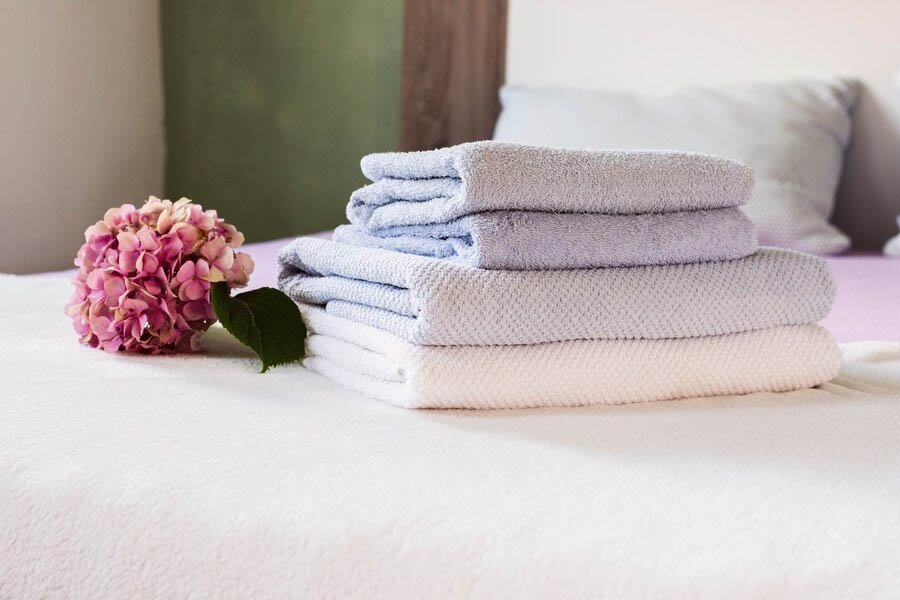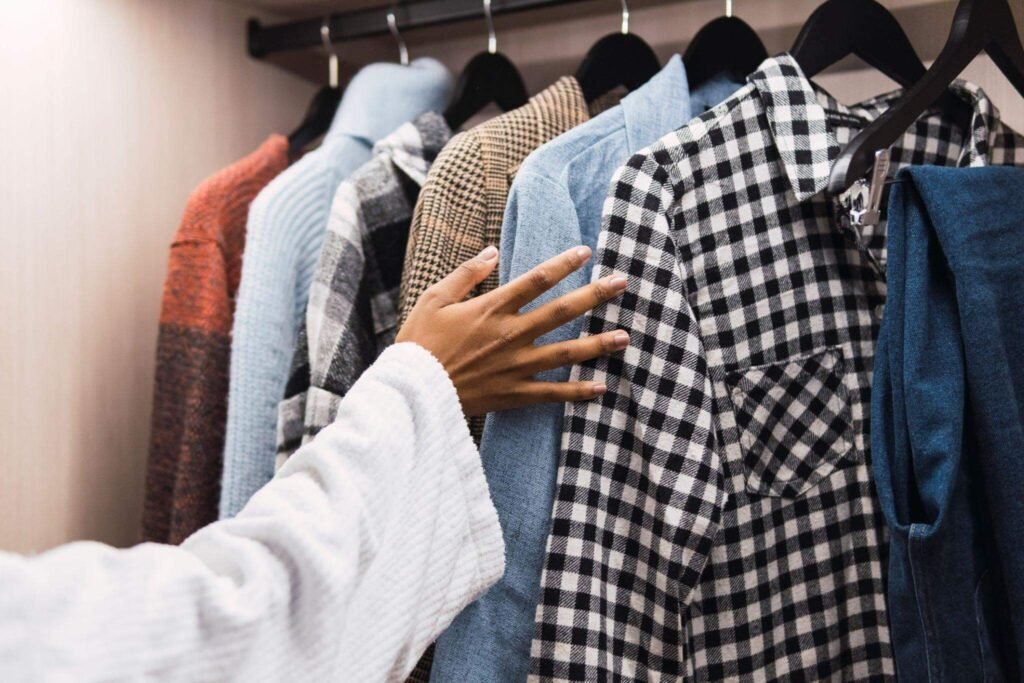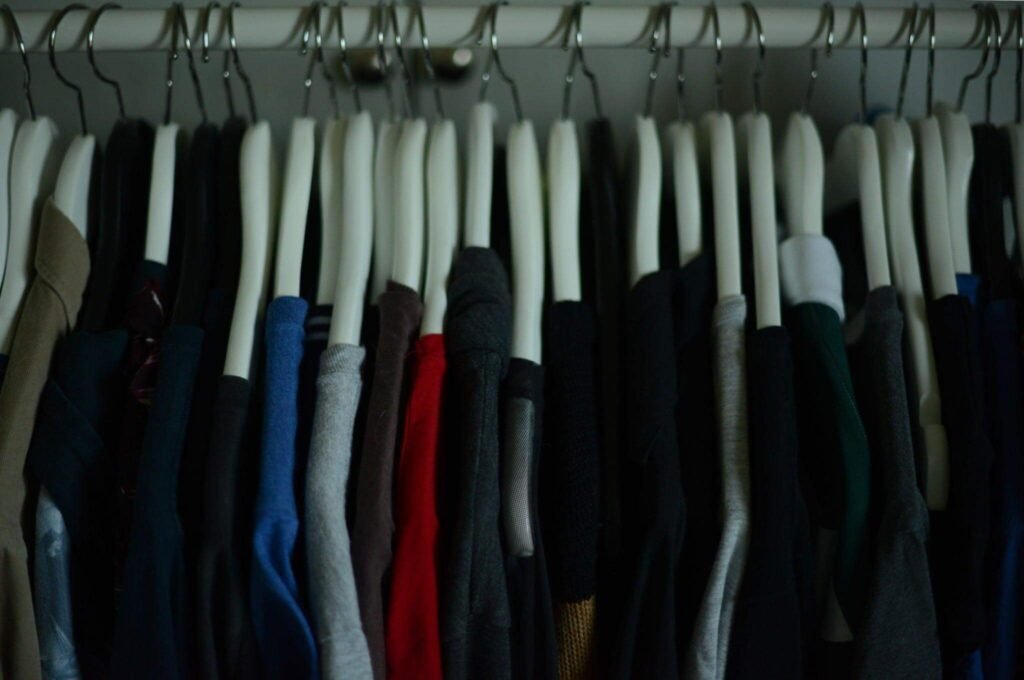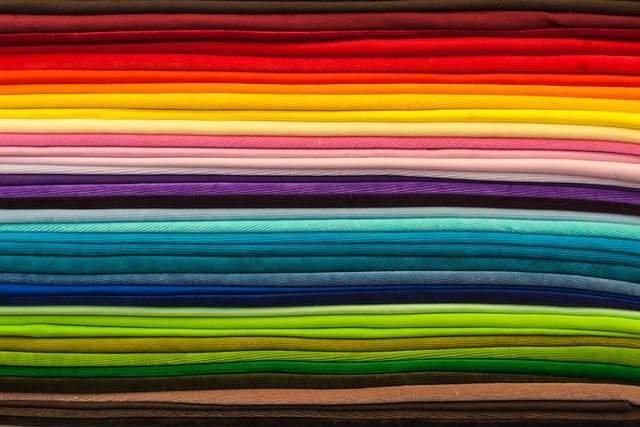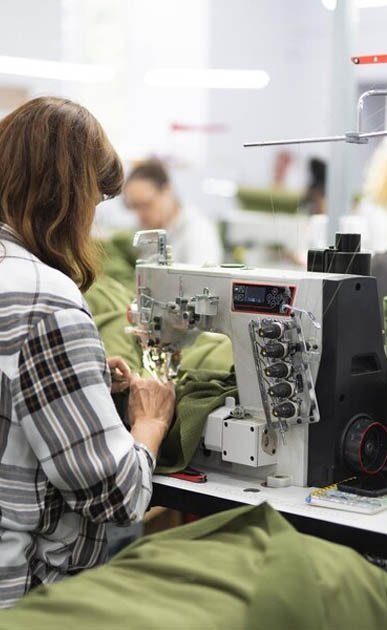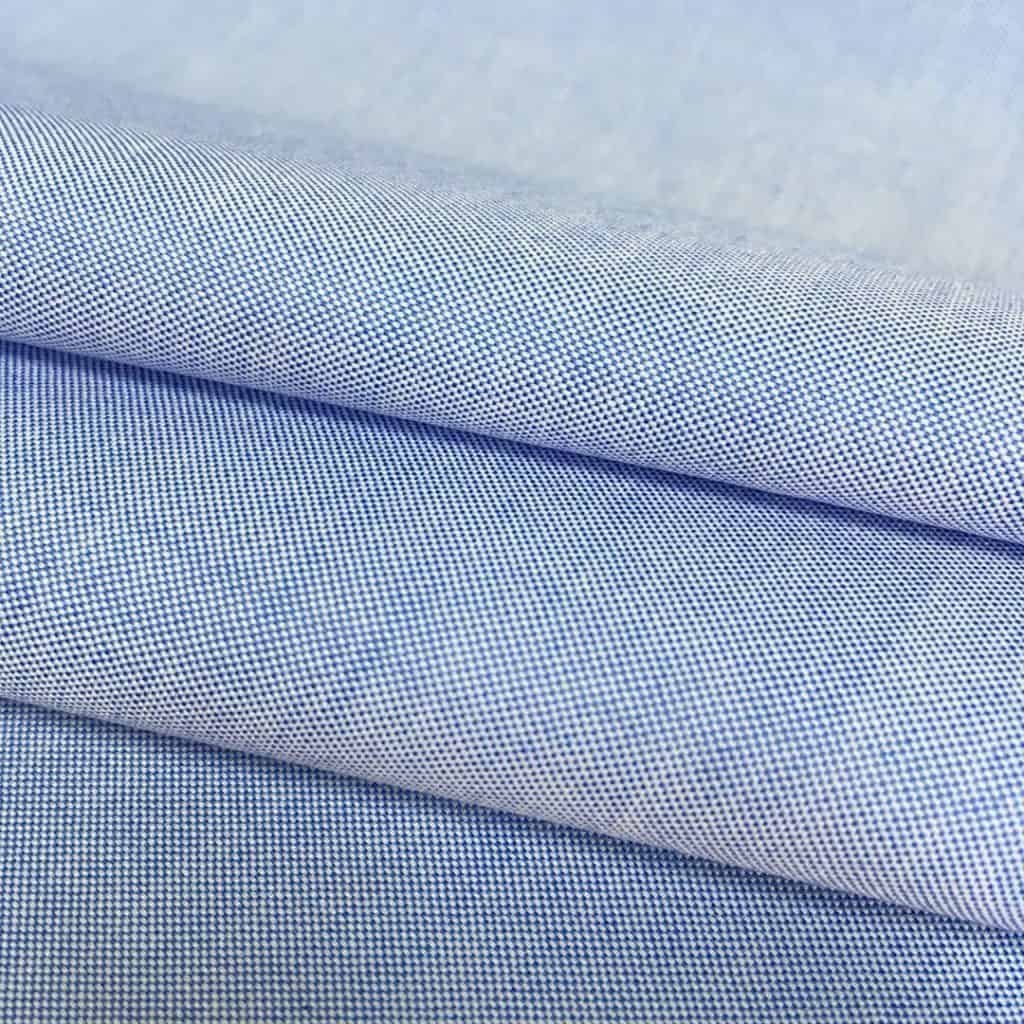
Oxford fabrics are popularly used for casual and semi-formal button-down dress shirts.
The fabric has a basket-weave structure. Because of this structure, the fabrics tend to be thicker in nature.
It’s also heavier than other dress shirt fabrics. These fabrics are also coarser in nature, so it’s mostly used for casual wear.
Developed during the 19th century, the Oxford cloth was one of the four fabrics a Scottish fabric mill developed. They’re named after the four most prestigious schools: Harvard, Cambridge, Yale, and Oxford.
However, due to the low popularity of the other three fabrics, production was discontinued.
Initially, Oxford textiles used only pure cotton fibers. But today, this fabric is made from synthetic fibers. These include rayon, viscose, and polyester.
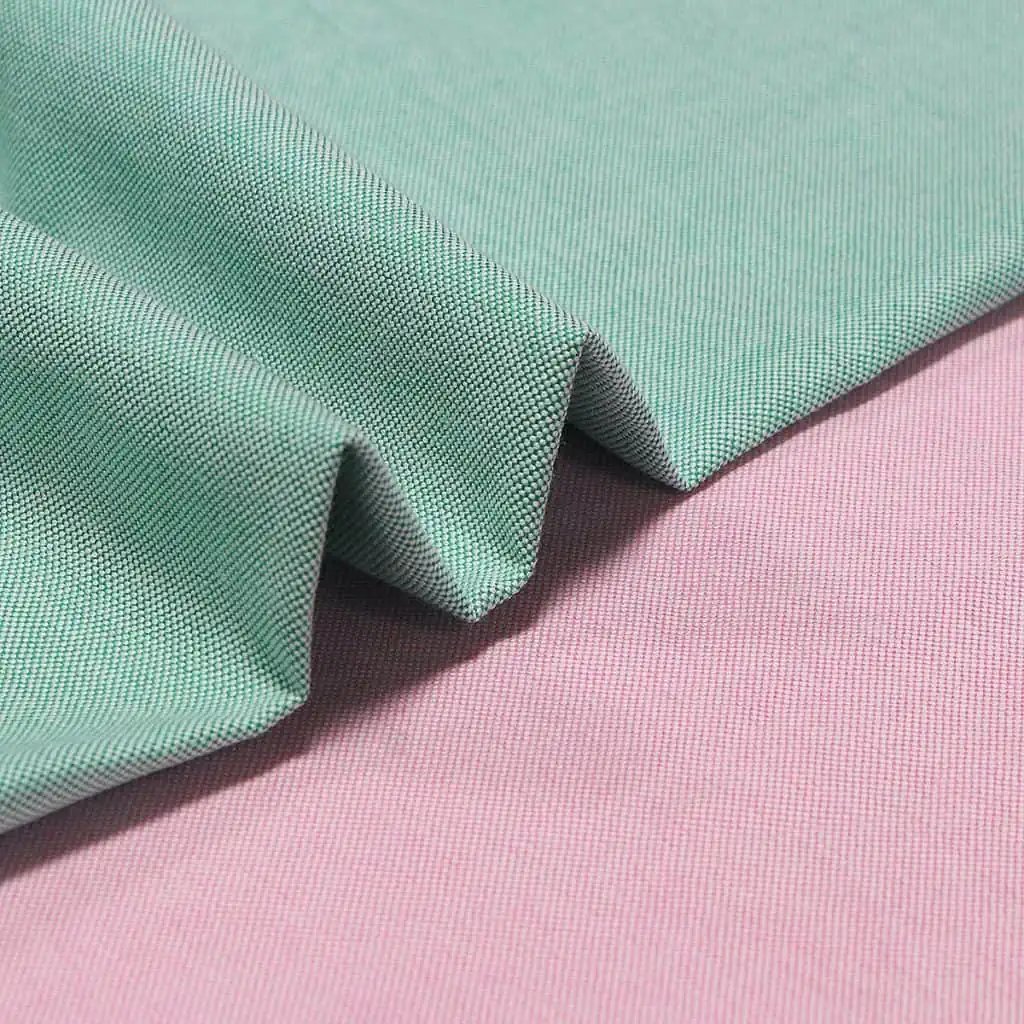
What Is Oxford Fabric Material?
The Oxford fabric is a woven fabric popularly used to make dress shirts. It comes in a basket-weave structure with different structural patterns. These fabrics are very versatile and can be produced in different weights. It can be produced in a lightweight form (50s single-ply). And it can also be produced in a heavier weight (40/1 x 24/2), depending on the fabric’s use.
This fabric is famously known for making button-down shirts. And it’s known to symbolize the casual American look. But Oxford textiles can also be used for other things. These include home furnishings and accessories.
Characteristics of Oxford Fabric
Oxford fabrics are one of the most versatile fabrics because of their robust features.
Material composition
Today, Oxford textiles are made from synthetic fibers such as polyester and rayon. Thus, it also embodies their characteristics. Because of that, Oxford cloth tends to stretch a little and is wrinkle-free.
Since Oxford fabrics are resistant to wrinkles, ironing is typically not needed.
Weave type
The Oxford textile uses a basket-weave structure. Thus, it gives the textile both durable and breathable properties.
Aside from that, the fabrics also have very fine textures due to their structure. The weight of a fabric varies depending on the structural pattern. The lightest one is a bit heavier than the average dress shirt fabric.
Durability
Oxford cloth is a very durable fabric. It can also retain the shape of a garment. Besides that, Oxford cloth has good resistance to chemical agents and abrasions.
Oxford fabrics can also be water-resistant. They can be coated with polyurethane (PU) to make the fabric wind and water-resistant. PU-coated Oxford textiles come in 210D, 420D, and 600D. The 600D fabric is the most water-resistant – where D means denier, a measurement used for fabric thickness.
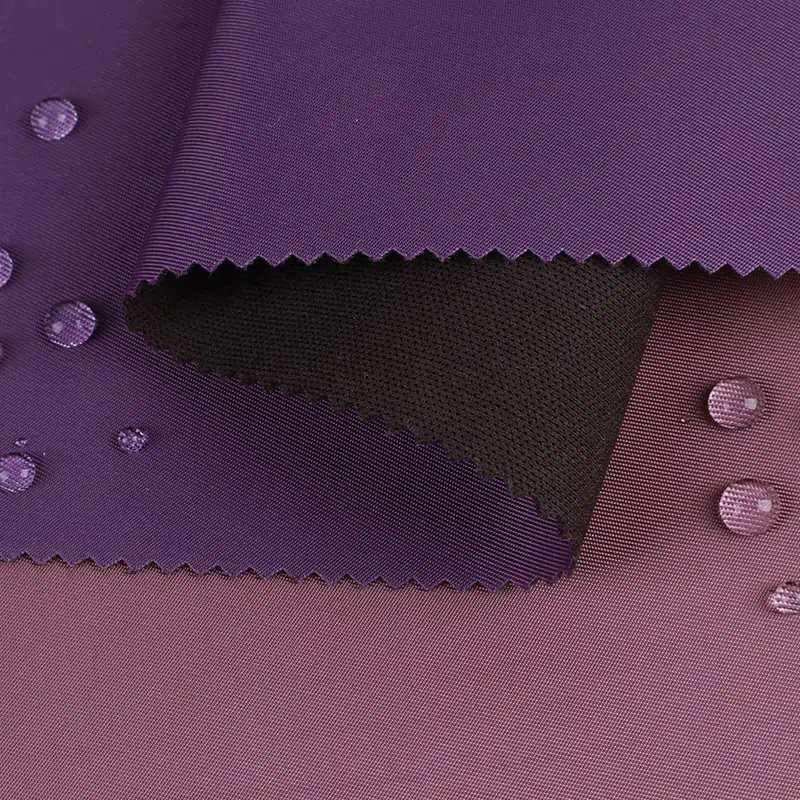
What Is Oxford Fabric Used For?
Oxford textiles are mostly used to make apparel. But it can also be used for other purposes, such as home furnishings and utility items.
Clothing
Oxford fabrics are commonly used to make casual and semi-formal wear. It’s mostly used for casual button-down dress shirts for men. But it can also be used to make pants, dresses, and coats.
These fabrics can also be used to make windbreakers, rain jackets, and outdoor jackets.
Home Furnishing
Oxford fabric is a sturdy piece of fabric. Thus, it’s also commonly used for pillow covers and curtains.
Utility items
Aside from home furnishings, oxford fabrics can also be used for outdoor gear. It can be used to make tents, backpacks, hunting and fishing equipment, and suitcases.
It’s a popular choice for outdoor gear because this type of fabric can be made from nylon and polyester. These synthetic fabrics can then be coated with polyurethane (PU)– giving the fabric wind and water-resisting properties.
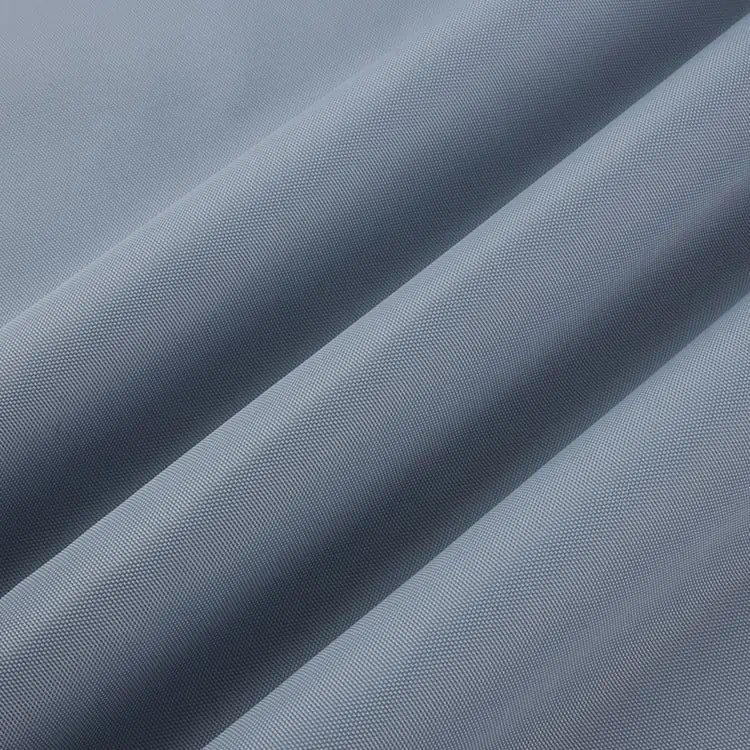
Types of Oxford Fabrics
Oxford cloth can be structured differently depending on its use. From lightweight to heavyweight, there’s an Oxford fabric to match your needs.
Plain Oxford
The plain Oxford cloth is the classic heavyweight Oxford textile (40/1 x 24/2). This is a smooth type of fabric that’s slightly thicker than an average dress shirt. It’s very durable and is usually used for casual button-down shirts.
50s Single-Ply Oxford
The 50s single-ply Oxford cloth is a lightweight fabric. It’s crisper compared to the regular Oxford fabric. It also comes in different colors and patterns. The 50s single-ply Oxford cloth is mainly used for business and smart casual shirts.
Pinpoint Oxford
The Pinpoint Oxford Cloth (80s two-ply) is made with a finer and tighter basket weave. Thus, this fabric is smoother and softer than the Plain Oxford. The Pinpoint Oxford is more delicate than the regular Oxford. So, be careful with sharp objects like pins.
The Pinpoint Oxford is thicker than the broadcloth and is opaque. It also works well for preppy business shirts.
Royal Oxford
The Royal Oxford Cloth (75×2 x 38/3) is a ‘premium Oxford’ fabric. It’s even lighter and finer than the other Oxford fabrics. It’s smoother, shinier, and has a more prominent and complex weave than its counterparts. The Royal Oxford textile is used for more formal events.
FAQs
What is the difference between Oxford and cotton?
Cotton is a type of fiber, whereas Oxford is a type of weave using cotton or other synthetic materials. Oxford fabric is also characterized as a heavyweight fabric.
Is Oxford fabric the same as polyester?
Oxford is a fabric weave that can be made with synthetic fibers like polyester. Polyester is a type of synthetic fiber that’s used to make specialty fabric weaves like Oxford.
Can you iron Oxford fabric?
Oxford fabric is wrinkle-resistant by nature. So, this fabric doesn’t need ironing. A simple air drying would do. If you really have to iron the fabric, please exercise proper caution.
How can you tell if a shirt is made of Oxford fabric?
A shirt made of Oxford cloth will feel thicker compared to a regular dress shirt. It also has a coarser texture than shirts made from poplin and chambray with subtle textures.
Is Oxford fabric waterproof?
Regular Oxford fabrics are not waterproof. But it can be coated with polyurethane (PU) to make the fabric wind and water-resistant. PU-coated Oxford textiles come in 210D, 420D, and 600D. 600D is the most water-resistant of the others.
Is Oxford fabric eco-friendly?
Oxford fabric’s eco-friendliness depends on the fibers used to make the fabric. Oxford shirt fabrics made from cotton fibers are environmentally friendly. But those made from synthetic fibers such as rayon, nylon and polyester are not eco-friendly.
Conclusion
Today, Oxford fabrics are very popular because of their versatility. This synthetic fabric weave can be produced in various ways. The Oxford cloth weave can be lightweight or heavyweight, depending on the structure.
It can also be coated with polyurethane to have wind and water-resisting properties.
Oxford cloth was used only for classic button-down dress shirts back then. While that’s still the most popular use of this textile- the possibilities of what you could make with Oxford textiles are endless.




